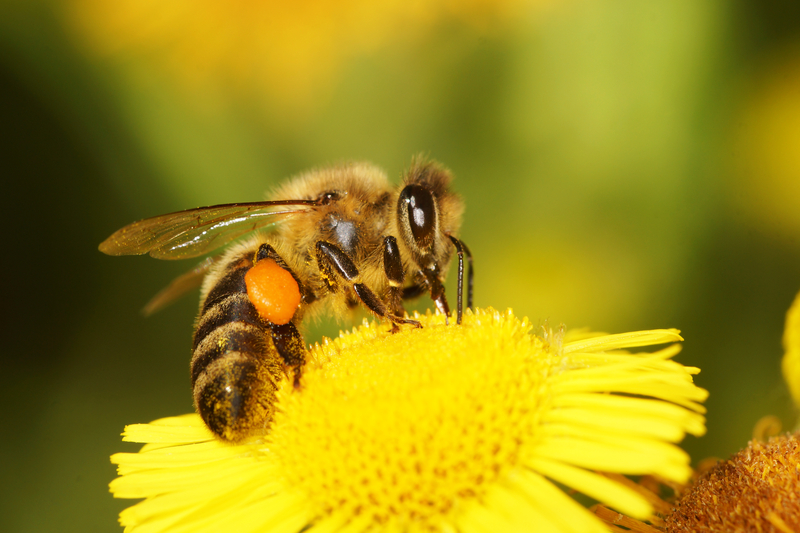Winter Guardianship: Protecting Garden Plants
Posted on 06/06/2025
Winter Guardianship: Protecting Garden Plants
When the golden leaves fall and the season turns cold, winter guardianship becomes a vital concern for gardeners. Protecting garden plants from frost, snow, and biting winds ensures that your hard-earned botanical treasures survive until spring. In this comprehensive article, we'll guide you through essential strategies, innovative techniques, and expert tips on protecting garden plants in winter--keeping your garden vibrant, healthy, and ready to bloom once the thaw arrives.
Understanding the Threats: Why Winter Protection Matters
Winter brings more than just a beautiful white landscape; it introduces challenges for every gardener. Freezing temperatures, desiccating gusts, icy precipitation, and fluctuating humidity levels can inflict lasting damage on unprotected plants. Winter plant care is about minimizing these risks and boosting plant resilience.
Major Winter Hazards for Plants
- Frost: Ice crystals form within plant cells, rupturing them and causing visible damage.
- Snow Load: Heavy snow can snap branches and crush delicate species.
- Windburn: Dry winds strip moisture from evergreen leaves and young bark.
- Temperature Fluctuations: Sudden thaws followed by freezes stress plants and cause bark splitting.
- Salt: Road and sidewalk salt runoff can burn roots and foliage.
- Hunger from Herbivores: Hungry rabbits and deer may feast on bark and shoots when food is scarce.

Preparation is Everything: Planning for Winter Plant Protection
Winter guardianship for garden plants begins before the first frost falls. Early planning means fewer losses and healthier plants when spring returns. Here's how you can prepare your garden to withstand the harsh conditions of winter.
Choose Plants Wisely
Start by selecting plants suitable for your hardiness zone. Native perennials and hardy cultivars are naturally adapted to local winters and require less intensive protection. Consult the USDA Plant Hardiness Zone Map or your local extension office for guidance.
Site and Microclimate Management
- Avoid Frost Pockets: Locate sensitive plants away from low-lying areas where cold air settles.
- Windbreaks: Use fences, hedges, or structures to shield gardens from prevailing winter winds.
- Good Drainage: Ensure soil footing doesn't become waterlogged, which can freeze and suffocate roots.
Essential Techniques for Guarding Garden Plants in Winter
Protecting your garden isn't a one-size-fits-all process. Each plant type and garden layout requires different winter protection techniques. Below, we've explored the most effective methods for winterizing garden plants.
Mulching: Nature's Insulating Blanket
- Organic Mulches: Straw, shredded leaves, pine needles, and bark chips stabilize soil temperature and retain moisture.
- How to Apply: Wait until the ground has begun to freeze, then apply mulch 2-6 inches thick around plant bases, taking care not to smother crowns or stems.
- Bonus: Mulch also prevents freeze-thaw cycles that heave roots out of the soil.
Protective Coverings and Structures
- Burlap Wraps: Enclose shrubs and small trees in burlap allow air circulation while blocking wind and sunscald.
- Floating Row Covers: Lightweight, breathable cloths shield annuals and veggies on mild winter nights.
- Cloche Domes and Cold Frames: Glass or plastic structures act as mini-greenhouses for delicate plants--excellent for overwintering herbs and salad greens.
- Garden Fleece or Frost Blankets: Use these for overnight cold snaps to protect early-budding perennials.
Anti-Desiccant Sprays
Evergreens are prone to winter burn, a condition where leaves lose moisture faster than roots can replace it. Periodic applications of anti-desiccant sprays form a protective film on leaves and needles, reducing water loss during cold, dry spells.
Watering and Soil Care
- Hydrate Before the Freeze: Water plants deeply in late autumn, especially evergreens and recently planted trees or shrubs. Moist soil retains heat better than dry soil.
- Good Drainage: Standing water can freeze, expand, and damage root systems. Fix drainage problems before winter sets in.
Tailored Guardianship: Plant-Specific Winter Protection
Not all plants require the same level of winter protection. Let's explore tailored strategies for different types of plants:
Evergreen Shrubs and Trees
- Windbreak Fences: Erect temporary screens using burlap or snow fencing on the windward side.
- Mulch Root Zones: Protect shallow roots from temperature swings.
- Prune Damaged Limbs: Remove broken or diseased branches in the fall to prevent winter breakage.
- Avoid Heavy Snow Loads: Gently brush snow off branches after storms to prevent breakage.
Tender Perennials and Bulbs
- Dig and Store: Lift tender bulbs (dahlias, gladiolus, canna lilies) before the ground freezes. Store them in a cool, dry, and dark place.
- Thick Mulch: Hardy perennials benefit from a deep mulch layer for added insulation.
- Cloche or Cold Frame: Extend harvests for late veggies by covering rows with transparent covers.
Young Trees and Grafted Plants
- Tree Wraps: Protect trunks from sunscald and frost cracks using tree wrap or white latex paint.
- Rodent Guards: Mesh cylinders or plastic wraps prevent gnawing by mice and rabbits.
Container Plants
- Bring Indoors: Move pots of tender plants indoors or into an unheated garage/greenhouse.
- Insulate Pots: Wrap containers in bubble wrap, burlap, or insulation to keep roots from freezing.
- Cluster Together: Group pots together against a sheltered wall for mutual protection.
Wildlife Management: Partnering for Winter Guardianship
Animals can be both allies and adversaries in the winter garden. While birds help control pests, rodents and deer may compromise your efforts at protecting garden plants.
Keeping Herbivores at Bay
- Fencing: Install mesh barriers around vulnerable shrubs and trees.
- Repellents: Commercial sprays or homemade concoctions (hot pepper, garlic, rotten eggs) deter deer and rabbits.
- Physical Barriers: Netting or hardware cloth wrapped around trunks discourages gnawing.
Encouraging Beneficial Wildlife
- Provide Shelter: Nesting boxes for birds and brush piles for beneficial insects support pollinators and natural pest control.
- Water Sources: Heated birdbaths supply much-needed hydration on freezing days.
Dealing with Extreme Weather Events
Modern winters can be unpredictable. Blizzards, ice storms, and polar vortexes require quick responses to prevent sudden plant losses. Preparation as part of your winter guardianship strategy is key.
Action Steps for Sudden Weather Changes
- Monitor Weather Reports: Stay alert to early frost warnings and storm forecasts.
- Emergency Covers: Keep old sheets, blankets, or frost cloths ready for last-minute plant protection.
- Temporary Windbreaks: Erect on short notice using plywood or tarps.
- Remove Snow Gently: Use brooms to brush snow off branches without breaking them.
Common Mistakes in Winter Plant Protection
Even seasoned gardeners can make errors in winter guardianship for garden plants. Avoid these pitfalls to give your garden the best chance:
- Mulching Too Early: Applying mulch before the ground freezes may attract rodents to warm, cozy burrows and promote rot.
- Improper Pruning: Heavy pruning in late fall encourages new, tender growth that's vulnerable in winter. Prune only as needed!
- Ignoring Watering: Underwatering evergreens leads to winter burn. Keep roots moist until the soil freezes.
- Neglecting Containers: Potted plants freeze faster; don't forget to insulate or bring them in.
- Skipping Checks: Failing to inspect protective wraps and covers can result in unchecked damage from storms or wildlife.
When Spring Returns: Assess and Recover
Once the snow melts, it's time to assess plant health and begin the journey back to a thriving garden.
Post-Winter Care Tips
- Remove Mulch Gradually: As temperatures stabilize, pull back mulch to prevent rot and encourage new growth.
- Inspect for Injury: Prune away dead or damaged branches to promote healthy regrowth.
- Fertilize and Water: Refresh depleted soil nutrients and ensure consistent moisture as growth resumes.
- Watch for Pests and Disease: Stressed plants are more susceptible; monitor closely and address issues early.
Modern Tools and Supplies for Winter Guardianship
As gardening evolves, so do the tools for winter plant protection. Explore these supplies to enhance your garden's defense:
- Smart Soil Thermometers: Accurately monitor freeze risk for timely action.
- Weather-Resistant Covers: UV-stabilized, breathable fabrics for reusable plant protection.
- Automated Greenhouses: Remote temperature and humidity control for sensitive species.
- Drip Irrigation Timers: Winterize systems to avoid frozen pipes while keeping soil hydrated pre-freeze.
Embracing Winter: The Rewards of Garden Guardianship
Practicing winter guardianship isn't just about plant survival. It's a reflection of your relationship with nature--caring, anticipating, and adapting with each season's rhythm. By proactively protecting your garden in winter, you ensure lush, vibrant growth in spring, conserve your investment in landscape beauty, and deepen your knowledge of horticultural cycles.
Key Takeaways for Winter Plant Protection
- Plan early and know your plants' needs.
- Use mulch, covers, and proper watering for insulation and hydration.
- Tailor strategies for evergreens, perennials, bulbs, and containers.
- Monitor wildlife and prepare for extreme weather events.
- Assess and aid recovery in early spring.
Winter guardianship for garden plants is both an art and a science--a testament to a gardener's patience and skill. By applying the techniques in this guide, you can minimize winter losses, maximize your garden's year-round beauty, and take pride in being a true steward of your home landscape.

Frequently Asked Questions on Winter Plant Protection
When should I start protecting my garden plants for winter?
Begin preparations in late autumn, before the first hard frost. This includes cleaning the garden, mulching, and setting up protective wraps and structures.
How do I know if a plant needs extra winter protection?
Factors include plant species, age, local climate, and exposure. Tender perennials, young trees, and container plants usually need more care than mature, established shrubs.
What is the best mulch for winter protection?
Organic mulches like straw, shredded leaves, or pine needles are preferred. Avoid heavy, compacting materials that could smother the plant's base.
Can I use plastic sheeting to cover my plants?
Avoid direct contact of plastic sheeting with plant foliage--it can cause condensation and freeze burn. Use breathable fabrics or set up plastic shelters with air gaps.
How can I protect my garden from deer and rabbits in winter?
Physical barriers like fencing and trunk wraps are effective. Add repellents or consider plant selections less appetizing to these animals.
Conclusion
As the chill of winter descends, don't leave your garden's fate to chance. Practice winter guardianship by understanding climate risks, arming yourself with proven protection techniques, and staying vigilant until spring's first buds appear. Your efforts will not only safeguard your green investments but also reaffirm your bond with the natural world throughout the year.



